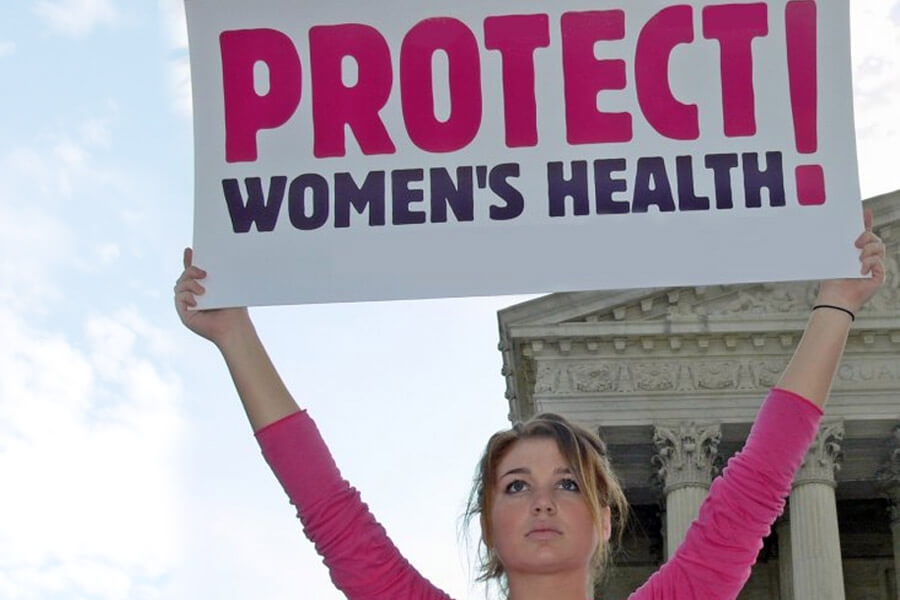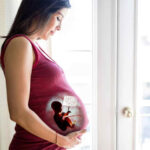It was the early fall of 1996 and I was a third year Obstetrics and Gynecology resident at an inner city hospital in New York. Our administrators felt that at some point in our training, we would need to get an idea of what private medicine looked like. In the spirit of our professional development, they arranged for each of us to spend several months at a private hospital in one of New Jersey’s wealthiest counties. That is how I came to know Nadine.
Although we were there to learn about the nuances of practicing medicine in a “for-profit” affluent institution, we were typically relegated to the clinic that catered to the less wealthy residents of its surrounding counties.
One Tuesday morning, I found myself assigned to the High Risk Obstetrics Clinic, and working under the tutelage of its chairperson, a 40-something, no-nonsense, African American woman, who I will just call Dr. Epps.
It amazed me how many young women had medical problems that had the potential to kill them or their babies. These women had diseases ranging from lupus to heart disease and renal failure. The clinic was always busy, but very well run; and Dr. Epps was always on-point.
Towards the end of our clinic session, a patient presented who was pregnant with her first child, but had been referred to High Risk OB due to a history of juvenile diabetes since about the age of 9. She was now 26, and had never expected to conceive but was ecstatic that she had.
She was fairly non-descript, about 5’4” with dirty blond medium-length hair, and with moderate central obesity, but with incongruently thin legs. She was soft-spoken and unassuming. What stood out most to me, however, were her glasses. They were beyond “coke-bottle” thick and it appeared that she might have had strabismus, or what many laymen would call a “floating eye”.
I soon came to find out that both her abdominal girth and her visual impairment were sequelae of almost 20 years of Insulin-Dependent Diabetes. She had suffered retinopathy, which is a pathologic condition of the retina, that can cause blindness. She had been fortunate enough to have undergone a corneal transplant due to associated corneal disease, and was blessed to be able to see out of her affected eye at all. It was this history, however, that would assign her to the highest level of risk that a pregnant diabetic can have.
After her examination and the usual question and answer session about symptoms of miscarriage or labor, Dr. Epps asked her to join us at the clinic’s conference table. She didn’t waste much time in getting right to the point.
“Nadine, it is my opinion that you should consider terminating this pregnancy. With your diabetic history, your retinopathy and your transplant, you have a greater than 50% risk of dying before you deliver.”
Nadine may have been in disbelief at that moment. I certainly was. But, if she was incredulous, she never let on. She looked at Dr. Epps and explained that she had every intention of keeping her baby. She had believed herself to be infertile and felt that her pregnancy was a miracle. A termination was entirely outside of what she ever wanted to do.
Before I knew what was happening, Dr. Epps whipped out a stack of papers, tacitly indicating that she had come prepared for this very response, and said,
“You have the right to refuse this recommendation, but we require that you sign a ‘Refusal of Treatment’ because you have been advised. We have the duty of recording that your refusal was made with full acknowledgment of the risks of continuing this pregnancy.”
She pushed the stack of documents toward Nadine. Nadine signed in the designated fields, and Dr. Epps dismissed her with instructions to return to the clinic in 2 weeks.
Dr. Epps was direct. She was clinical. She was cold.
And I was disgusted. It seemed to me that she’d made a recommendation, which should have been outside of the scope of what physicians would typically suggest. And wasn’t she exaggerating the odds of Nadine dying? I was convinced that it could not be as bad as it sounded. Certainly, Dr. Epps was being histrionic.
Maybe she read the shock on my face. Maybe she could tell that I had bristled at her clinical management. Maybe she felt that I was just a trainee who didn’t deserve to have an opinion. I’ll never know.
What I do know is that she turned to me, and changed her tone completely. It was no longer the measured and professional tone that she’d used to tell Nadine to have an abortion. It was the tone and body language of one black woman in conflict with another, who is daring her opponent to say “…just one more thing”.
Before I could ask a question or state a position, she said,
“This is not a joke. She will be unlikely to live to see the birth of her own child.” And then she was gone.
Over the course of the next several weeks, Nadine would appear in the Emergency Room on multiple occasions, as her sugars fluctuated wildly. The types and doses of insulin that she was receiving were either not working at all, or working so well that she would become hypoglycemic enough to be in danger of dying.
Eventually, it became necessary to admit her to the hospital’s ante-partum unit so that her sugars could be monitored more carefully, and an immediate intervention could be implemented should she go into cardiac arrest. There was a Glucagon gun by her bedside that could be used to elevate her blood sugar if it happened to fall rapidly and precipitously, which it often did. Her initial admission, which occurred at about 18 weeks of pregnancy, resulted in stabilization of her sugars after about 5 days in the hospital. She was discharged, but then returned with the need for admission less than two weeks later.
Eventually, she came back with the understanding that she would probably need to remain in the hospital until after her delivery. Her sugars had proven too brittle for outpatient management.
It was not uncommon during this time to get frantic calls, at all times of day and night, from nurses who were working with her and would come into her room to find her almost non-responsive due to her low blood sugar.
This went on for weeks.
At some point during the late winter/early spring, I had a weekend off and returned to my apartment in New York. Upon arriving at the hospital on Monday morning, I received some very devastating news about Nadine.
Again she’d had an episode of hypoglycemia, and lost consciousness entirely. The medical team had been unable to revive her and she was transferred to the hospital’s Intensive Care Unit and placed on life support. Although the fight for her life was no longer a possibility, the idea was to keep her on the ventilator so that her 32-week fetus would have more time to mature before delivery. Unfortunately, this did not come to pass. It is my understanding that it became necessary to deliver her baby emergently as Nadine had started to experience multi-system organ failure.
Before that weekend ended, she underwent a cesarean section in order to save her child, at which time her ventilator support was discontinued.
As Dr. Epps had predicted, she never lived to meet her daughter, whom she chose to name “Faith”.
This is a true story, although the names have been changed in the interest of protecting Nadine and Faith. It is as tragic, as it is true.
I have chosen to share this story and this experience because women like Nadine are those who are often forgotten, or never even known about, when the debate about abortion and a woman’s right to choose starts to rage.
There are instances like these where a pregnancy poses significant risk to the life and well-being of a woman. If and when Roe v. Wade is overturned, will women like Nadine have any options about their own life or death?
In advocating for the life of an embryo and all that it can one day become, we must be careful not to trample upon the rights of a mother to live.
In this case, Nadine chose to continue her pregnancy and to give her baby a chance. I often wonder if she made that decision with the belief that her disease was lethal and that her life was truly at risk. I often wonder if she was simply deep in denial or deep in her faith… yet another thing that I will never know.
What I do know, however, is that women like Nadine should be given the choice to live or die. They should be empowered to make, what must be a difficult and terrifying decision. In instances like these, they should be allowed to do what they feel is best, under the full protection of the law, and the support of their physicians.










